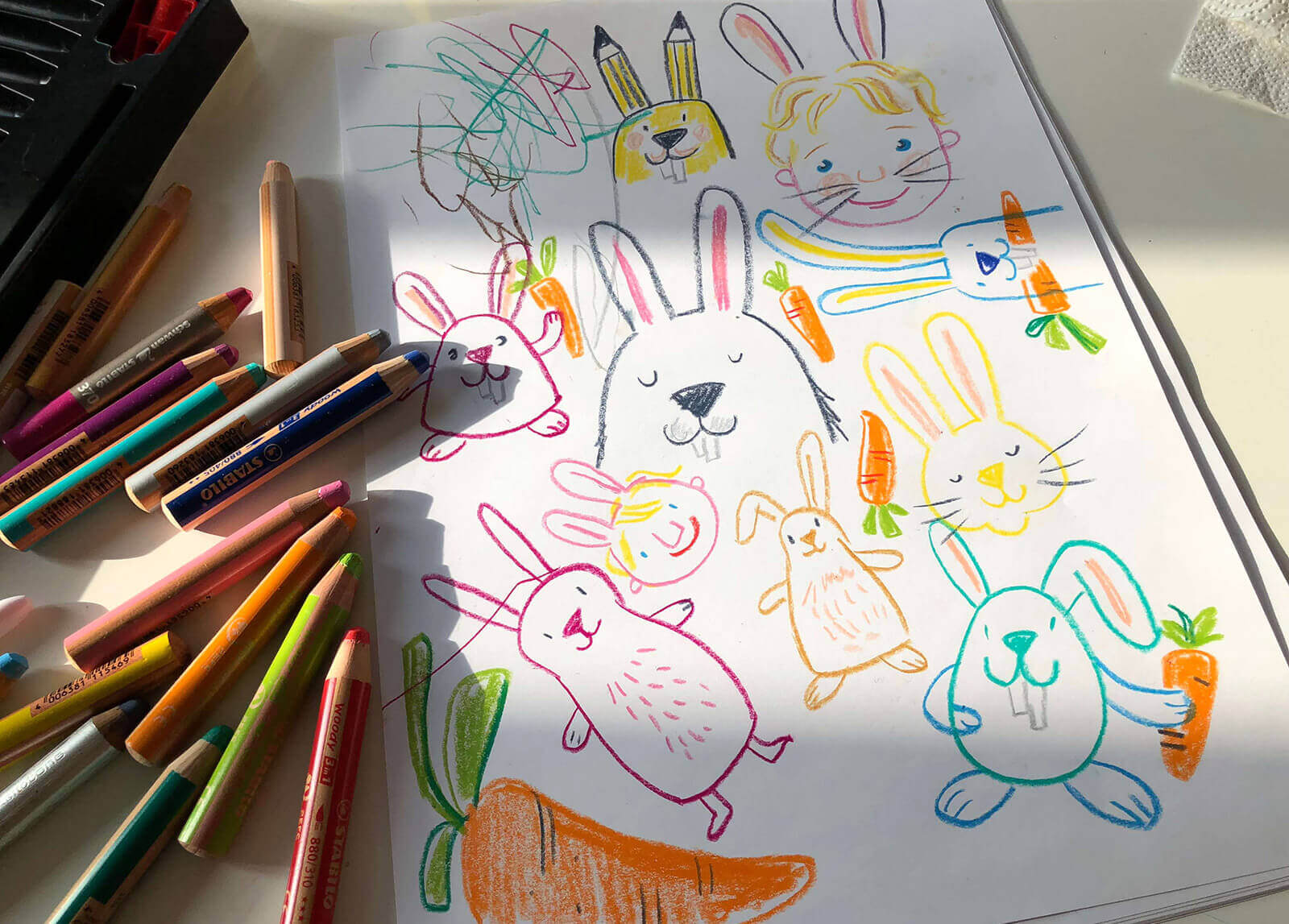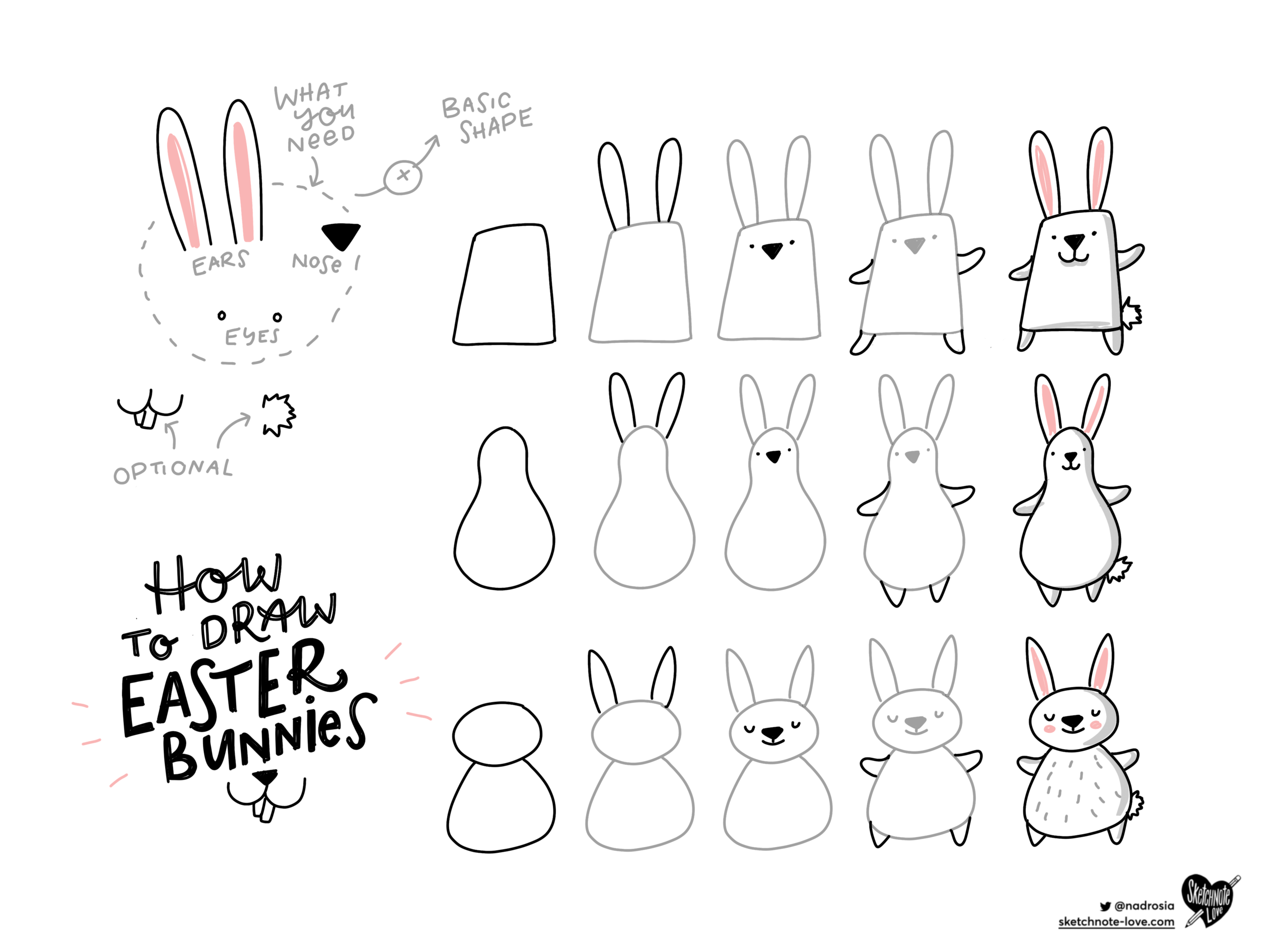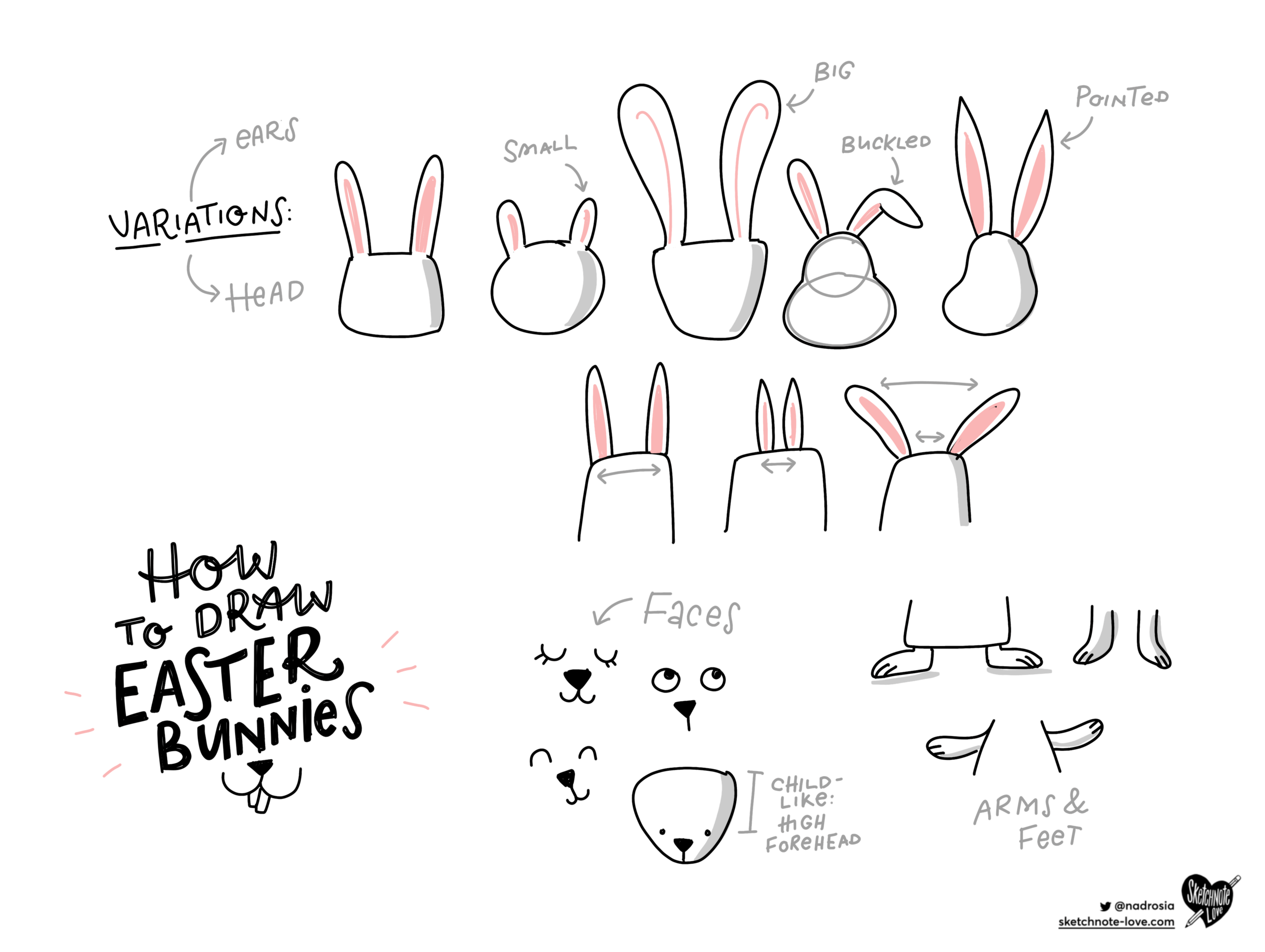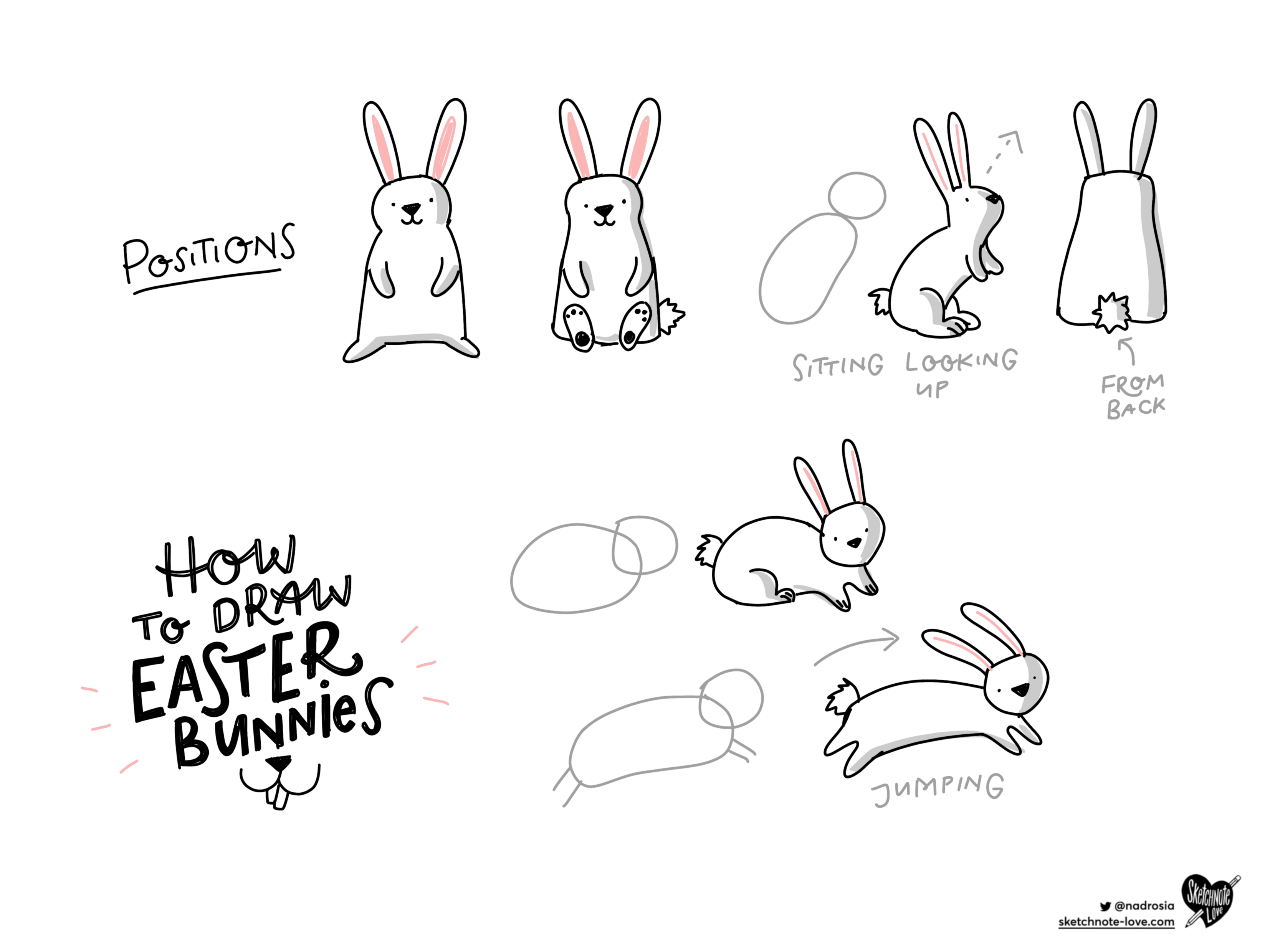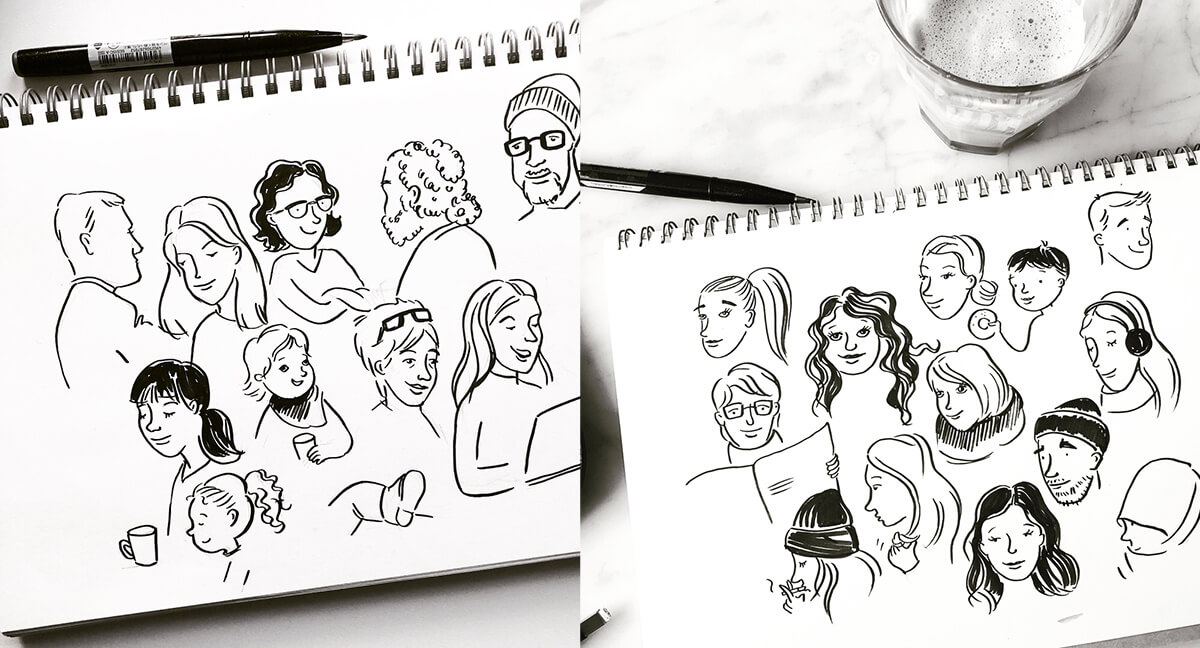Yesterday I was drawing with my kids and since it is Easter this week we decided to draw Easter bunnies. I noticed that – like everything – you can draw bunnies very easily. It’s the same principle that applies to symbols in sketchnotes: everything can be drawn out of simple shapes.
Lots of possibilities
To draw bunnies you just need a basic shape for the body. That can be an organic shape or a square or two ovals together. What you need to make it a rabbit is: ears, a triangle nose and eyes. If you want you can add a tail or teeth but that is not necessary.
From here you have tons of variations to chose from: Different ears look like (big, small, pointy, round …), where are they placed on the head, how does the eyes look like, how to feet and arms look like etc.
Positions
The easiest thing is to draw the rabbit from the front, looking directly at you. But you can also move it a little, make it jump or draw it from the side.
Practice
You’ll probably spend some time with your family over Easter I guess. Good! Perfect to practice a little. Take some kids, pens (BTW I love those ones from Stabilo – Affiliate), paper and draw as many bunnies as you like!
Happy Easter!
Want the Newsletter? Sign-Up! ↓

